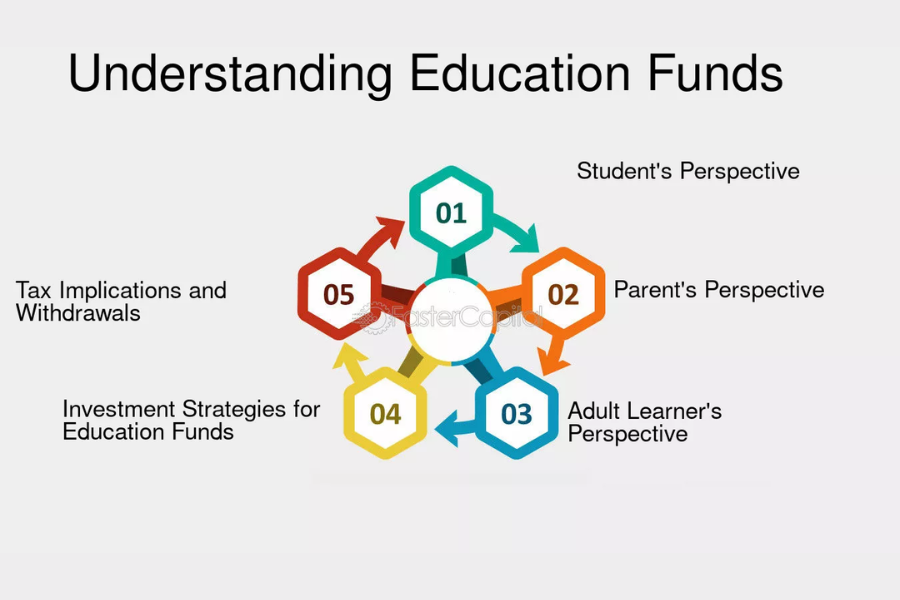
Exploring The Various Types Of Education Funds
Education is one of the most important investments a person can make, but the rising costs of tuition, textbooks, and living expenses have made financing this investment increasingly challenging. To help families and individuals meet these costs, a variety of education funds are available. In this article, we will explore the different types of education funds, their benefits, and how they can be utilized to support educational goals. The National Student Financial Aid Scheme (NSFAS) offers various education funding options, and conducting an NSFAS status check using ID number ensures you are informed about your eligibility.
529 College Savings Plans
A 529 College Savings Plan is one of the most popular and widely used education savings accounts in the United States. These plans are specifically designed to encourage saving for future educational costs. Here’s a breakdown of how they work:
Key Features:
- Tax Advantages: Contributions to a 529 plan grow tax-free, and withdrawals are also tax-free when used for qualified education expenses, such as tuition, books, and room and board.
- Flexibility: These funds can be used at eligible colleges, universities, and trade schools. In some cases, they can also be used for K-12 education expenses.
- Ownership and Control: The account owner (often a parent or grandparent) controls the funds, not the student.
Who It’s Best For: Families looking for a tax-efficient way to save for future college or university expenses.
Coverdell Education Savings Accounts (ESA)
The Coverdell ESA is another tax-advantaged savings account, similar to a 529 plan but with a few distinct differences.
Key Features:
- Lower Contribution Limits: The annual contribution limit for Coverdell accounts is $2,000 per beneficiary, much lower than that of 529 plans.
- More Flexibility: Coverdell ESAs offer broader flexibility regarding what qualifies as an education expense. Funds can be used for K-12 education in addition to college expenses, covering things like tutoring, uniforms, and other school supplies.
- Income Restrictions: Unlike 529 plans, Coverdell ESAs have income restrictions, so not everyone may qualify to open one.
Who It’s Best For: Families who want flexibility in funding not just higher education but also private elementary and secondary schooling.
UGMA/UTMA Custodial Accounts
Uniform Gifts to Minors Act (UGMA) and Uniform Transfers to Minors Act (UTMA) accounts are custodial accounts that allow parents or guardians to transfer assets to a child. While not specifically designed for education, these accounts can be used for educational purposes.
Key Features:
- Control and Ownership: The funds in UGMA/UTMA accounts legally belong to the child once they reach the age of majority (18 or 21, depending on the state). Until that time, the custodian manages the account.
- No Restrictions on Use: While many people use these accounts for education, there are no restrictions on how the funds must be spent once the child assumes control. The child can use the funds for any purpose, including non-educational expenses.
- Tax Considerations: Earnings are taxed at the child’s tax rate, which is typically lower than the parents’ rate.
Who It’s Best For: Families looking to gift or transfer money to their children, potentially for educational purposes but with flexibility on the final use. Also get idea about provisionally funded meaning
Prepaid Tuition Plans
Prepaid tuition plans allow you to pay for future college tuition at today’s prices. These plans are typically sponsored by state governments or educational institutions and are a hedge against future tuition inflation.
Key Features:
- Lock-in Tuition Rates: By pre-paying, you avoid tuition increases and secure a more affordable cost.
- State-Specific: Many prepaid plans are limited to in-state public schools. However, some plans have reciprocity agreements that allow funds to be used at other institutions, including private or out-of-state schools.
- Limited to Tuition: These plans typically cover tuition and mandatory fees but may not cover room and board or other expenses.
Who It’s Best For: Families certain that their child will attend a participating public institution and want to avoid the rising cost of tuition.
Source:



